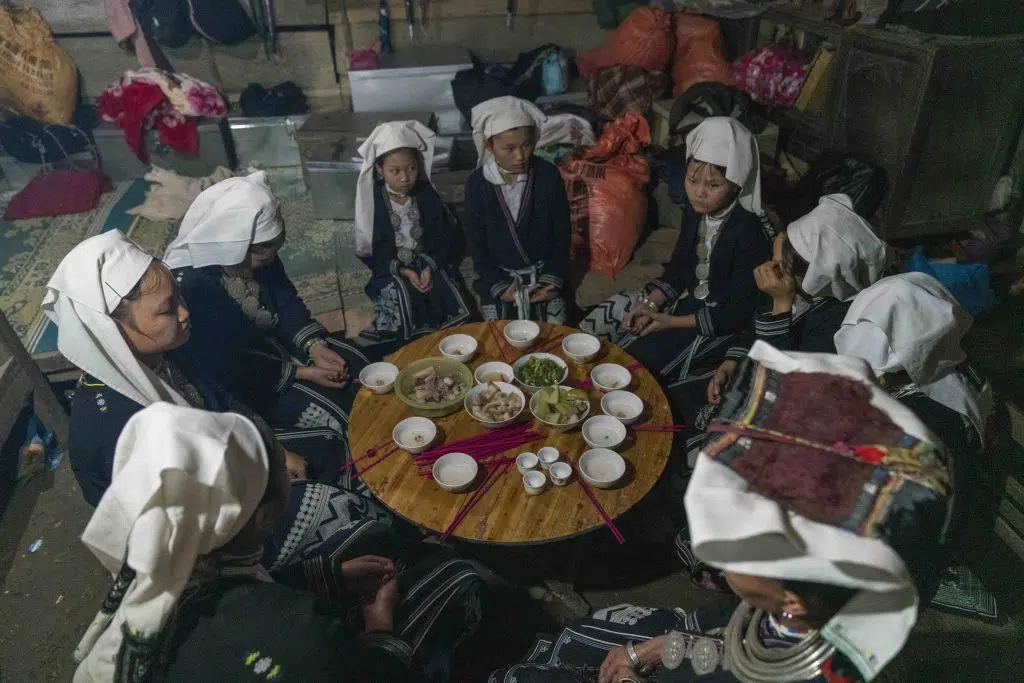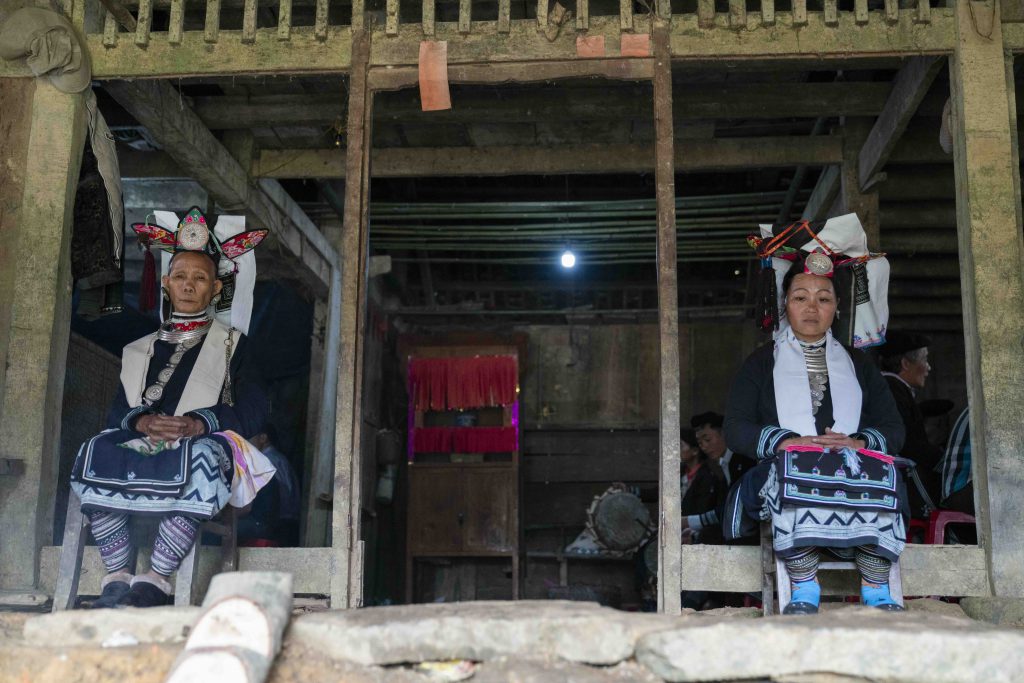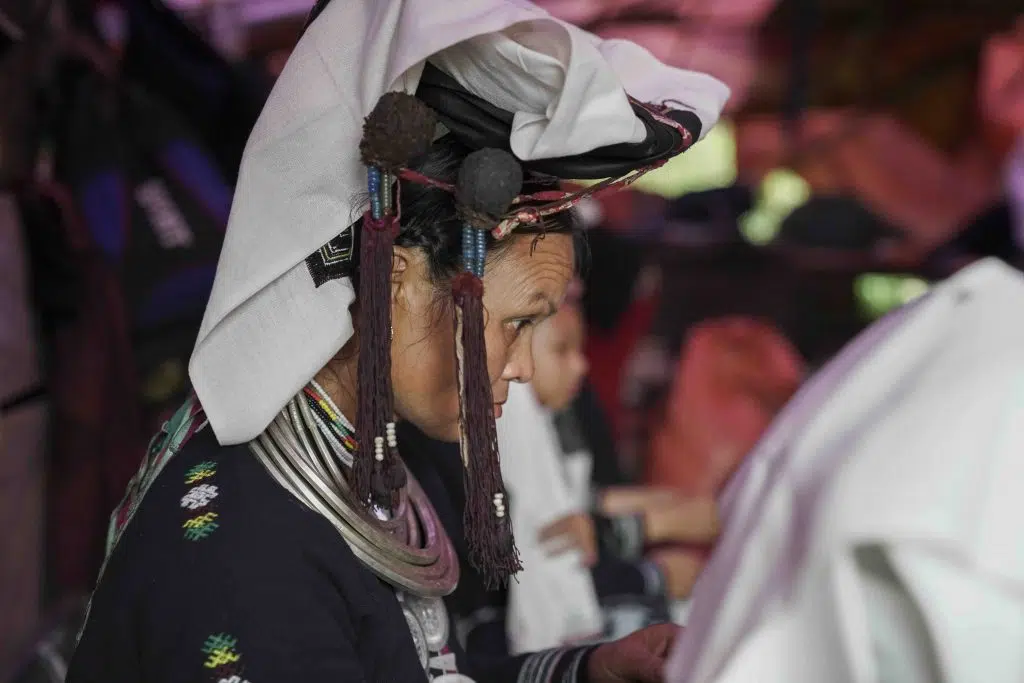Story: Thai Nga
Photos: Bui Tuan Hung
Explore the distinctive culture of the Dao Tien people in Hoai Khao Ancient Village, situated in Thanh Cong District, Cao Bang Province, through the Cap Sac ceremony and their traditional attire.
In Vietnam, people of Dao ethnicity are concentrated in the northern mountains and midland regions. Because they’re spread across wide, rugged areas, the community is comprised of many different subgroups, each with its own unique culture and customs. The Dao Tien make up about one-third of Vietnam’s total Dao population.

We arrived at Hoai Khao Ancient Village in Thanh Cong District, Cao Bang, during the Cap Sac ceremony, one of the most important rites of passage for Dao Tien people. This place felt rich with culture, carefully passed down through generations. Along with the unique rituals and spiritual elements, the traditional clothing stood out for its sophisticated craftsmanship. Mostly in indigo and white, the outfits aren’t flashy but leave a strong impression thanks to a special indigo dyeing technique and beeswax-resist patterns, finished off with shimmering silver accessories.
A standout feature of a Dao Tien woman’s attire is her white headscarf, embroidered at both ends with colorful five-thread designs and two large square motifs. Women typically wear their hair in a high bun, with the scarf wrapped neatly across the forehead, covering the nape and ears. The two ends of the scarf hang down evenly, forming a shape that resembles the Chinese character for the number “eight” (八).

A Dao Tien woman wears an indigo tunic that usually falls to about mid-thigh. It doesn’t have buttons but wraps diagonally across the chest, with the overlapping panels held in place by a belt worn over top. The chest area is often decorated with thin silver discs shaped like stylized stars, representing the four directions and eight cardinal points of the universe. On the back of the collar, you’ll often see a string of silver coins, or in some cases, several fabric strips covered in coins that drape down and nearly cover the wearer’s whole back.
Silver holds special value for people in this region, which is why silver jewelry is both common and traditionally handmade. A typical set worn by Dao Tien women includes three to seven necklaces, along with bracelets and earrings. One of the most eye-catching pieces is the xà tích, a decorative silver ornament that stands out against the wearer’s deep indigo clothing. It’s adorned with small, detailed charms shaped like rice stalks, fish, farming tools, or betel nut boxes and lime pots.
The traditional attire of Dao Tien men is relatively simple, with both clothing and headscarves dyed a deep shade of indigo. The indigo shirt is decorated with small white motifs on the cuffs and front placket, while the hem is embroidered with simple colored threads.

Dao Tien people employ an intricate beeswax-resist dyeing technique to embellish their garments. First, the beeswax is melted and filtered to remove impurities. Bamboo or rattan tubes of various diameters or thin strips bent into triangular shapes are dipped into hot beeswax and stamped onto the fabric to create patterns. For more elaborate motifs, the wax is poured into pen-like tools with a reservoir, allowing it to be drawn onto the cloth. Once the wax sets, the fabric is dyed. It’s typically soaked in indigo dye overnight and sun-dried by day, with this process repeated 15 to 20 times until the desired deep blue hue is achieved. Finally, the fabric is immersed in boiling water to melt the wax, revealing the white designs, which contrast beautifully against the indigo background.
In Hoai Khao, visitors may meet Dao Tien women making use of their extra time during the farming off-season to embroider or exchange knowledge about weaving and beeswax printing. Today, as society develops and cultural exchange intensifies, Dao Tien people typically reserve their traditional garments for special occasions, such as major family celebrations and traditional festivals like the Cap Sac ceremony. During such events, even the men, who tend to dress simply in daily life, proudly don their traditional outfits, adorned with shimmering silver ornaments across the chest and strings of silver coins hanging down their backs.
The Dao Tien community in general – and particularly in Hoai Khao – is determined to preserve and promote their cultural identity through traditional attire. These garments are more than just a way to distinguish one Dao subgroup from another or other ethnic groups. Beyond their function and beauty, they are powerful symbols that reflect the long and rich history of their ancestors.










